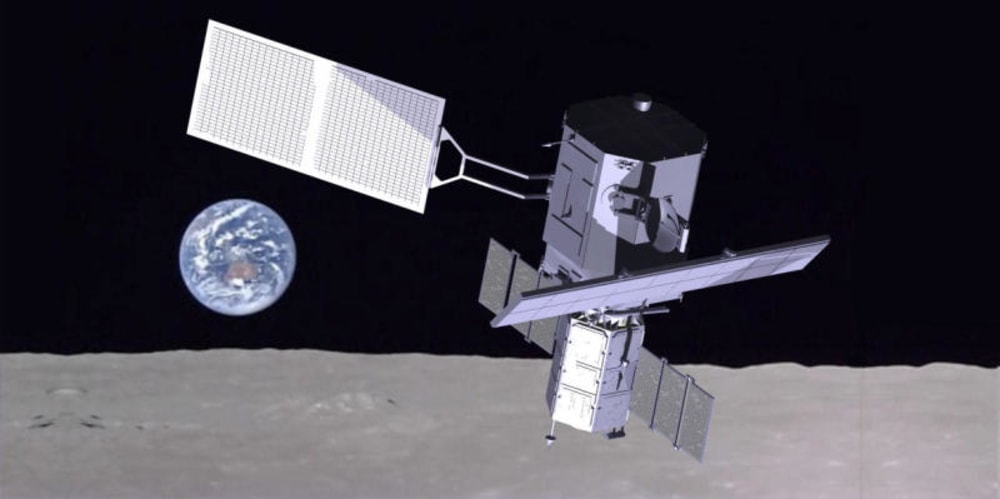Background:
Nowadays security space activities are seriously threatened by space debris, more than 300,000 fragments in orbit. The most orbital debris is from disused LEO satellite. If we do not clean it up, the space debris problem will get worse. I suggest a method for reusing disused LEO observation satellites for the lunar exploration to reduce space debris. The life of a satellite is almost caused by exhaustion of fuel for the altitude and position control more than the reason of communicates interruption or electronic components breakdown. After satellite refueling, its life can be extended.
Advantages of reusing LEO satellite:
In this entry, I use Korea Multi-purpose Satellite(KOMPSAT-2) as an example. It will finish its life at 2013. It has a high resolution Multi-Spectral Camera (1m panchromatic and 4m multiband images) for the accurate observations at 685km altitude. If the KOMPSAT-2 is sent into a moon orbit at 50km altitude, we can get 0,07m panchromatic and 0,29m multiband super high resolution images. This is highest resolution compared with other lunar explorers ever created.
The larger optical lens diameter on a satellite, the higher resolution is obtained. But lunar explorers so far have limited at the optical lens design. Because the heavier launch weight, the more expensive launching costs are needed. One of the recent lunar explorers, NASA’s Lunar Reconnaissance Orbiter (LRO) installed an optical lens which has diameter of 24 cm and weight of 16.4 kg with the highest resolution of 0.5 m. But earth observation satellites have larger diameter and higher resolution optical lens than LRO. For example KOMPSAT-2 has optical lens diameter of 80 cm and weight 250 kg. When the disused LEO satellite is reused to the lunar exploration, it can be saved launching costs as much as optical lens weight. Launching costs are approximately $0.2 million per 1kg.
To be realized:
To realize this study, first of all, launch the additional module installed main engine for the flight to the moon including lunar exploration devices. And then it performs automatic rendezvous and docking with KOMPSAT-2. After that they become one lunar explorer and it is sent to higher orbit for the entrance to the moon orbit. When the explorer arrives in the mission orbit, it is started mission that include highly accurate 3D cartography, gravity and magnetic field measurement, mineral resource investigation, etc.
The main thrust and attitude control are used from a main engine and thrusters of the additional module which is launched from the earth. So the refueling system is no need. Communication system is also no need to change its communication band and type. After docking, the additional module receives a signal from KOMPSAT-2 and amplifies and retransmits by a transponder installed in. It makes be possible to communicate between an earth station and KOMPSAT-2.
Conclusion:
The lunar exploration will be enabled more economically and effectively with above technologies. It will be the first lunar exploration mission by reusing LEO satellite. As the results, these technologies can be solved the space debris problem.
Like this entry?
-
About the Entrant
- Name:Jeongbeom Kim
- Type of entry:individual
- Software used for this entry:CATIA V5 R19
- Patent status:none








